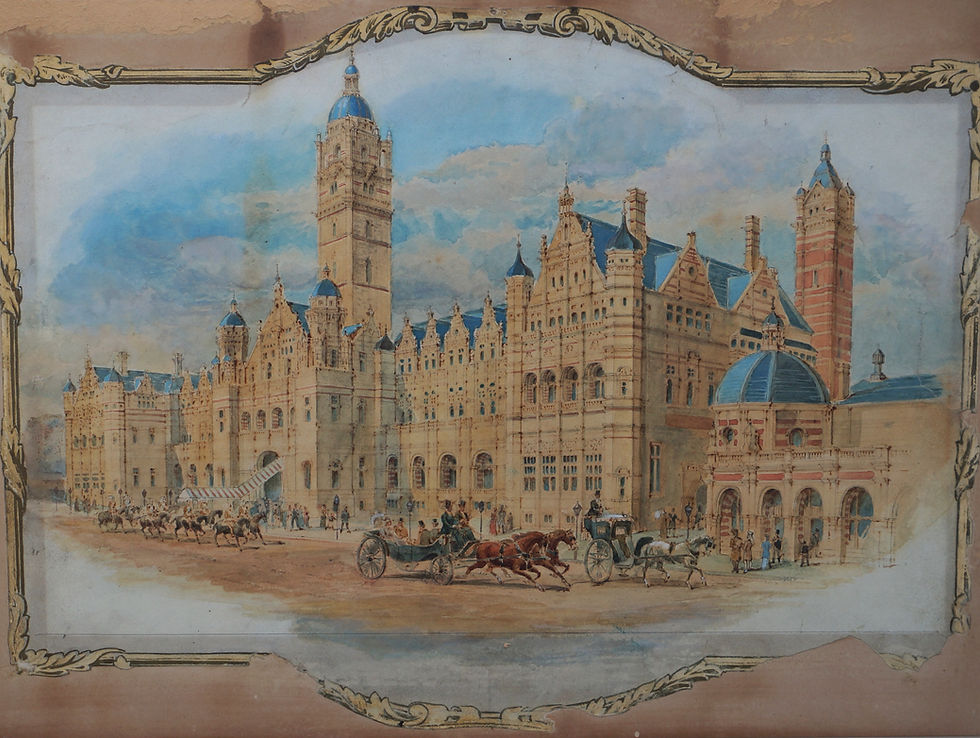Circle of Thomas Edward Collcutt (1840-1924) Imperial Institute c.1890s
Although this watercolour has a inscription for the 'Natural History Museum', it is very likely this work depicts the Imperial Institute in London. The architect Thomas Edward Collcutt produced the winning design for the Institute in 1888 (see photos) and it clearly is the same building. The central tower is in almost exactly the same position along with most of the structure. The main difference is the building on the right of our work appears detached from the larger structure whereas in the Imperial Institute design it is attached.
The British Museum has a useful description of the Imperial Institute itself:
'The Imperial Institute was established in 1888 and the building was opened at South Kensington by Queen Victoria in 1893. The architect was T E Collcutt. The building was transferred to the Colonial Office in 1907 and in 1925 to the Department of Overseas Trade. In the 1950s, parts of the buildings were demolished for the expansion of Imperial College.
The Institute itself was renamed the Commonwealth Institute in 1958 and moved location next to Holland Park. It once housed an ethnographic and art collection but objects were dispersed at various times, including to the short-lived British Empire and Commonwealth Museum at Temple Approach, Bristol, which was open to the public from 2002 to 2008. Parts of the collection are now held by Bristol Museum & Art Gallery.' [1]
The architectural historian Martin O'Rourke kindly suggested that Collcutt, in common with other Victorian architects, often used architectural illustrators to produce presentation drawings. He suggests that this drawing may have been displayed at the Royal Academy, where Collcutt frequently submitted drawings for the architectural room of the Summer Exhibition. Another suggestion is that this work may have been commissioned by the Imperial Institure as a piece of PR. Collcutt himself did not do architectural rendering or illustration. There were various assistants in his practice or outside who he commissioned to do presentations, particularly for the Royal Academy annual show. Although O'Rourke could not specifically identify the draughtmas on stylistic grounds, he has suggested that it may be Charles Edward Mallows (1864-1915) who was an architect known for his presentation drawings and renderings, working for many other architects, including Collcutt. We have therefore put this watercolour as 'Circle of Thomas Edward Collcutt' as it is clearly linked to Collcutt's studio and further research may help to show who the talented artist was.
Medium: watercolour on paper, 26 x 40.3 cm (not including the elaborate border), mounted. Inscribed verso 'Natural History Museum' cardboard mount. The work furthermore came in wrapped paper that was also inscribed 'Natural History Museum'.
Provenance: Bill Thomson (Albany Gallery).
Bibliography:
[1] British Museum, 'Imperial Institute', website: https://www.britishmuseum.org/collection/term/BIOG124766, accessed 17/11/22.
Condition report: some foxing and small tears visible on the watercolour which has been stuck down onto card. The work would benefit from a clean and restoration.
We are grateful for the help of Martin O'Rourke for his help in researching this work.


